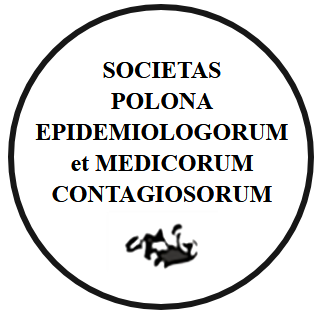Seroprevalence of Helicobacter pylori infections in children and adults in Poland in the years 2020-2023
Publication date: 2024-02-02
Przegl Epidemiol 2023;77(3):317-326
KEYWORDS
ABSTRACT
INTRODUCTION.
Helicobacter pylori is a common cause of gastrointestinal infections in people around the world. Various microbiological methods are used in the laboratory diagnosis of infections, including determining the presence of specific antibodies in the serum. Serological tests can also be used in epidemiological studies aimed at determining the incidence of H. pylori infections.
OBJECTIVE.
The aim of the study was to obtain insight into the incidence of antibodies to H. pylori in subjects of different ages living in Poland in the years 2020-2023.
MATERIAL AND METHODS.
The research used serum samples obtained between January 2020 and September 2023 from 600 subjects living in Poland. The Anti-Helicobacter pylori ELISA IgG enzyme immunoassay from Euroimmun was used to test the level of IgG antibodies to H. pylori antigens. Additionally, selected serum samples were tested for the presence of antibodies to the most important protein virulence factors of H. pylori by Western Blot.
RESULTS.
IgG antibodies to H. pylori, at a diagnostically significant level, were detected in 28.3% of the examined persons. Antibodies to H. pylori were least frequently detected in children under 10 years of age (12.1%) and teenagers (13.2%). In adults aged 20 to 50, these antibodies were more common (23.9% to 29.5%). Statistically, H. pylori antibodies were most often detected in subjects over 50 years of age (52.3%). There were no statistically significant differences in the frequency of antibodies to H. pylori depending on the gender of the examined persons. In most serum samples tested by Western Blot, the presence of antibodies to the CagA protein was detected (66.7%).
CONCLUSIONS.
The conducted research and analysis of literature data showed a similar percentage of serum samples with a diagnostically significant level of antibodies to H. pylori in people living in Poland as in people living in other European countries. The epidemiology of infections is also very similar, characterized by low morbidity in children and adolescents and an increase in the incidence of infections with the age of the examined persons. Importantly, compared to research conducted in our country several years ago, the percentage of positive results is much lower, which may be due to the improvement of social and living conditions and hygiene habits.
We process personal data collected when visiting the website. The function of obtaining information about users and their behavior is carried out by voluntarily entered information in forms and saving cookies in end devices. Data, including cookies, are used to provide services, improve the user experience and to analyze the traffic in accordance with the Privacy policy. Data are also collected and processed by Google Analytics tool (more).
You can change cookies settings in your browser. Restricted use of cookies in the browser configuration may affect some functionalities of the website.
You can change cookies settings in your browser. Restricted use of cookies in the browser configuration may affect some functionalities of the website.





